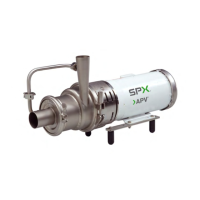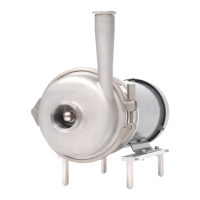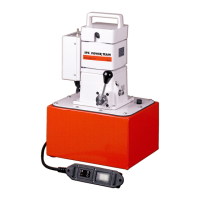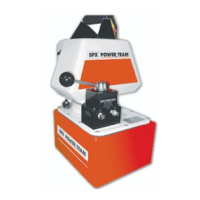5.1 Checking the shaft seal
Check the pump’s shaft seal for leaks on a regular basis. If the shaft
seal is leaking, replace it or its relevant parts as described below.
5.2 Replacing the shaft seal
The assembly drawing shows the position and construction of the
shaft seal - both ordinary seals and seals with water/steam flushing.
To replace the shaft seal, it is necessary to dismantle the pump as
described below. The assembly drawing is to be used for reference.
1.
Disconnect the power supply in the motor isolator by removing
the fuses and disconnecting the cables.
2. Turn off the steam and flushing water supply.
3. Close the inlet and discharge of the pump and drain the pump
body.
If the pump is used for hot and/or aggressive liquids, special
pre cautions must be taken. In such cases, observe the local
regula tions for personal protection when working with these
products.
4. Once the inlet and outlet pipes have been closed properly,
release the clamp ring (item 9a) or body screws, take off the
pump body (item 1a,1b) and remove the impeller (item 4).
5.
Remove the stationary seal face (item 5.6) mounted in the back
plate (item 7a, 7b) with your fingers.
6.
Remove the O-ring (item 5.5) from the stationary seal face.
7. Use your fingers to remove the rotary seal face (item 5.7)
mounted in the impeller (item 4).
8.
Remove the O-ring (item 5.5) from the rotary seal face.
9. Clean the stator and rotary seal face locations, if necessary with
air or water.
9a.
In the case of water-flushed/aseptic shaft seals, the back plate
must be removed to dismantle the rear shaft seal. The rear seal
stationary seal face (item 5.6) is mounted in the pressure ring*
(item 5.11) and the rotary seal face (item 5.7) is mounted on the
shaft (item 11). These are removed in the same way as the front
seal components.
* The W+50/600 has 2 identical pressure rings.
10. Check O-rings (item 5.5) for signs of cracks, lack of elasticity,
brittleness and/or chemical attack. Replace worn or defective
parts.
11.
Check the stationary seal face (item 5.6) and rotary seal face
(item 5.7) for signs of wear too. The wearing surfaces must be
completely free of scratches/cracks. If not, the rotary seal face
and stationary seal face must both be replaced.
5. Maintenance
Dismantling the pump
Dismantling the shaft seal
Checking wearing parts
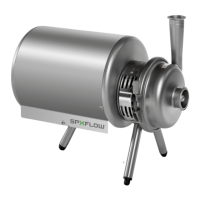
